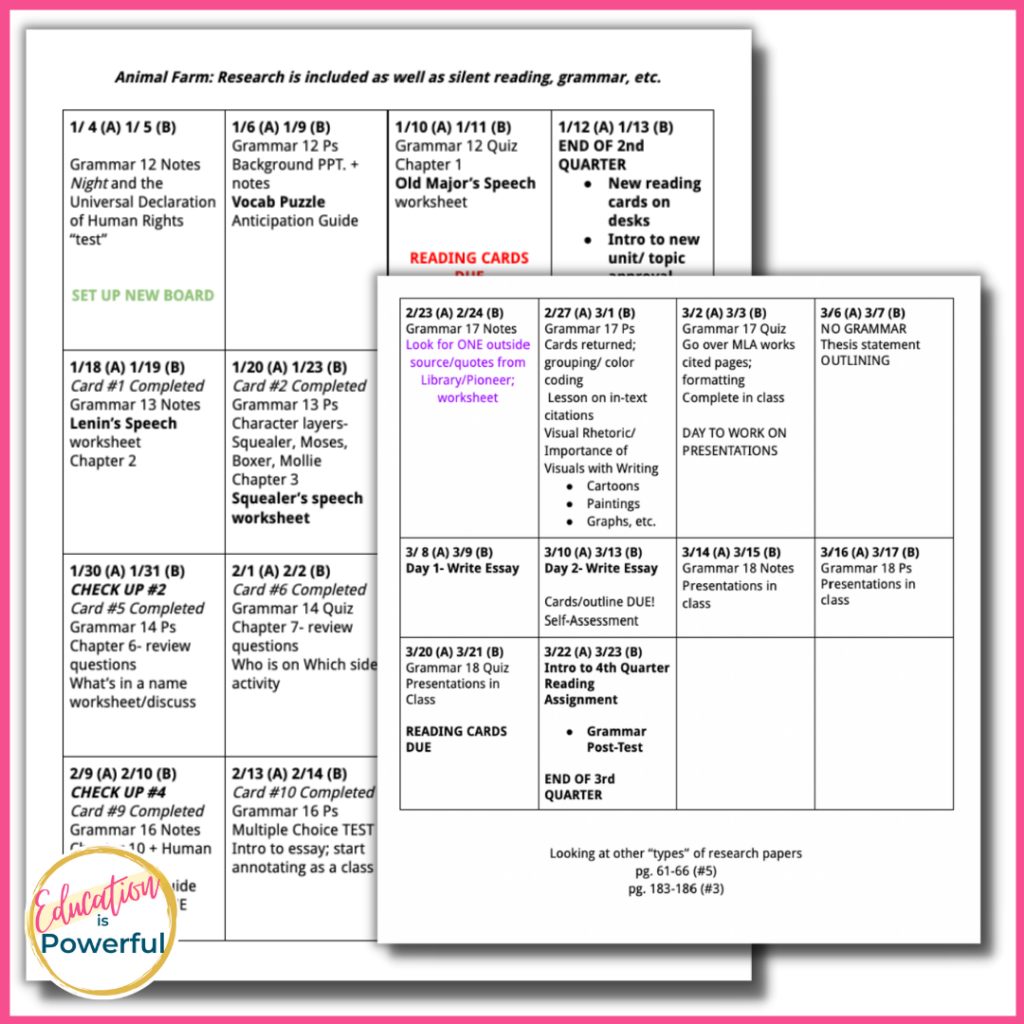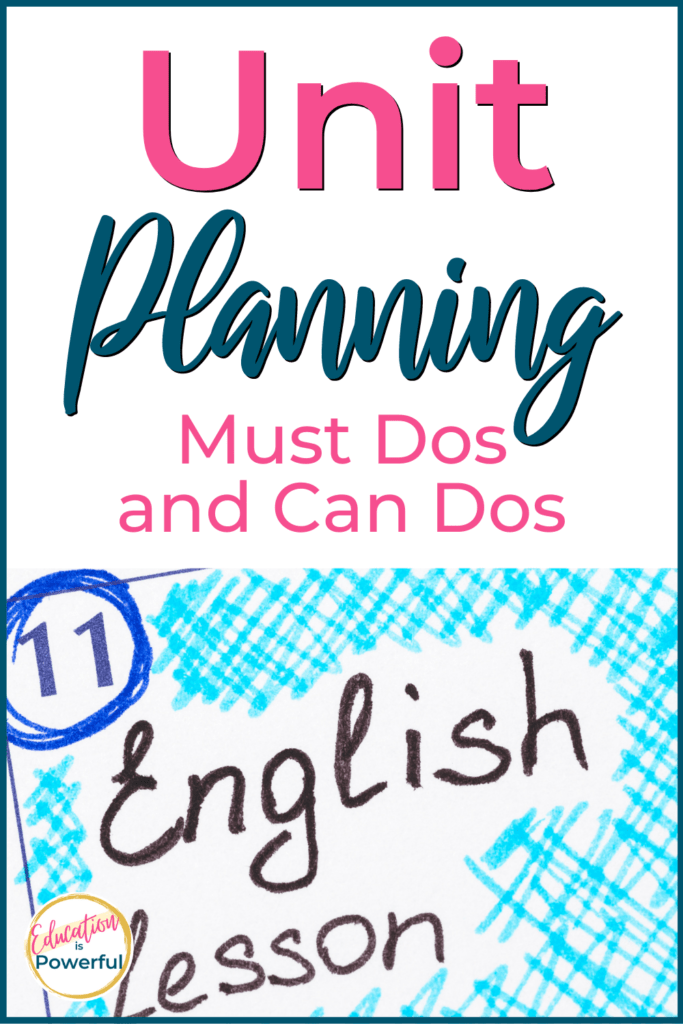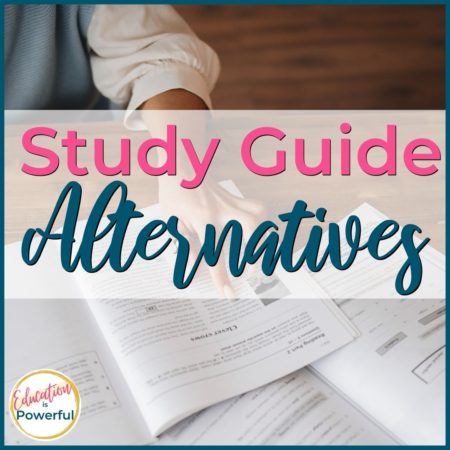When mapping out our units, we need to start with the end in mind. What are your goals for the unit? What do you want students to have learned? What do you plan on assessing? What standards are you teaching and which ones are you assessing? (Yes. Those are two different questions.)
Mapping out your unit allows you to decide what you need to make sure you do and get to everything that is essential.

Backwards Design
When we start with the end in mind, we start with the assessment. To do that, you need to know what is main goal of your teaching is going to be for this unit. What standards are you teaching? How will students show they have mastered these standards
More often than not in an ELA class, students demonstrate their knowledge with an essay. In order to show they they understand the reading standards, students need to either write or speak about it. The ELA standards are so intertwined that we will often use writing and speaking to assess reading.
Once I have identified the standards I want to assess and how they are going to demonstrate their learning, I work backwards with how many days I need of instruction, writing, editing, reading, vocabulary, grammar, etc. to get there. I also try to plan in assemblies, days off, 1 flex/sick day for myself, and testing.

This isn’t detailed – just topic, maybe main activity for the day, objective, and standard taught. This is a bird’s eye view of the unit.
When I first started teaching, I started planning with the first day of the quarter and then moved to the next day. Because I was only a few days (or maybe even 1 day – eek!) ahead of my students, I would get to the end of the quarter and have to rush through reading or not give students enough days to revise their writing.
This led to me grading non-stop at the end of the quarter. I remember one fateful quarter where all of my classes had their essay’s due at the same time – all 226 students. I graded all weekend. It was hell. Not to mention that I didn’t actually give good feedback and students didn’t get to revise – nor did they care because their grades were already due.
The other problem with this is that a huge chunk of student’s grades were given the Sunday night before grades were due with zero communication to parents and students. So they woke up on Monday to a surprise grade. Not good practice – at all. I apologize to all those students! I’ve learned better.
What are your Must Dos?
Once I have the quarter planned out, I go back to the calendar and identify the Must Dos.
These are all the assignments I absolutely must do in order to get to the end of quarter assessment. These are assignments and activities that will help students be successful. These include the standards I’m assessing that quarter.
You can identify these in the unit planner any way you wish, but I bold it. If these need to be done on certain days, then I will put the date after it and bold the date as well.

What are your Can Dos?
Everything else in my unit plan is a Can Do – not a Must Do.
These are the activities, lessons, assignments, etc. that I want to do, but don’t have to do.
For example, when I taught Animal Farm, I would have students write their own 10 Commandments. It was fun, got students thinking about what society needs to function. But the unit focussed on Literary analysis and author’s craft. So I didn’t need to teach that lesson.
So, when Surprise! we are having a pep assembly because the football team made the state playoff – I can easily look at my unit plan to see what I need to drop or be sure to include in the days lesson. You can plan and be flexible all at the same time.
If the lesson that day is a Must Do, then I know that I will need to cut something in the future.
Ways you can start mapping out your unit?
1. Pen and Paper Planner
2. Calendar - Online
You can also keep a digital calendar to do this, using the color coding options there. I’ve used a Google Calendar – just make one specifically for each class.
There are also specific planning apps like Planbook. I used this for several years. I liked this because I could move lessons around, attach files, media, list standards, strategies, upload a template. It really is amazing! I ended up moving to a paper planner because we were required to put everything online in a system the district used. So, it was hard to enter everything in twice.
You can even just use a google document. Make a table and start filling it in. Sometimes basic is best. Here is my outline for Animal Farm.

3. Detailed Unit Plans
If you are required to keep or submit your detailed lesson plans, you can simply bold or not the lessons or elements that are must dos or can dos.
All of this allows you to see at a glance that what you need to make sure you do and what you can let go.




